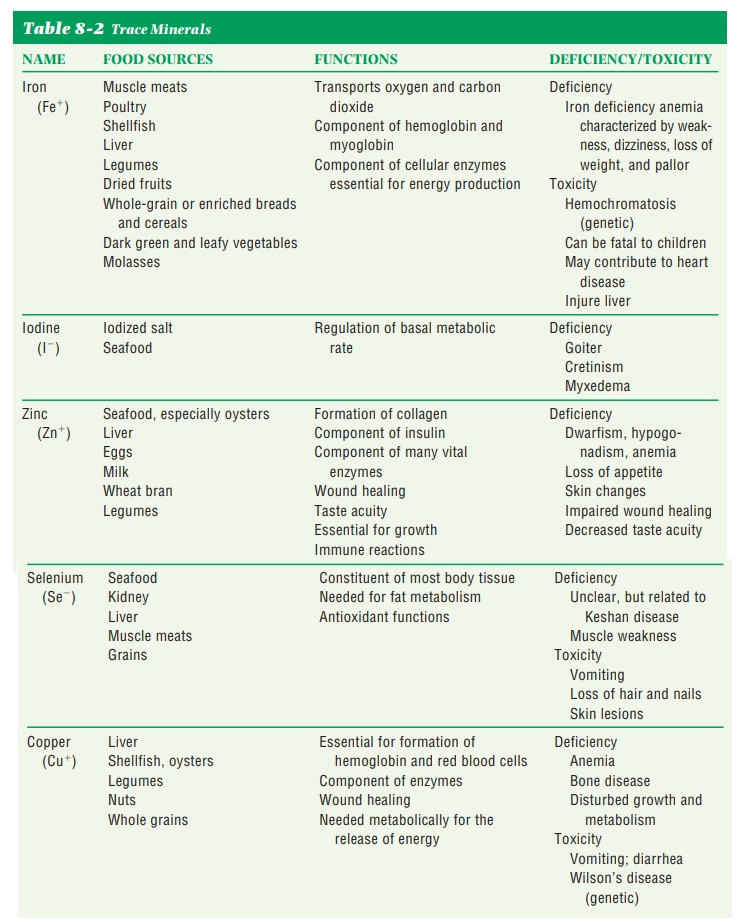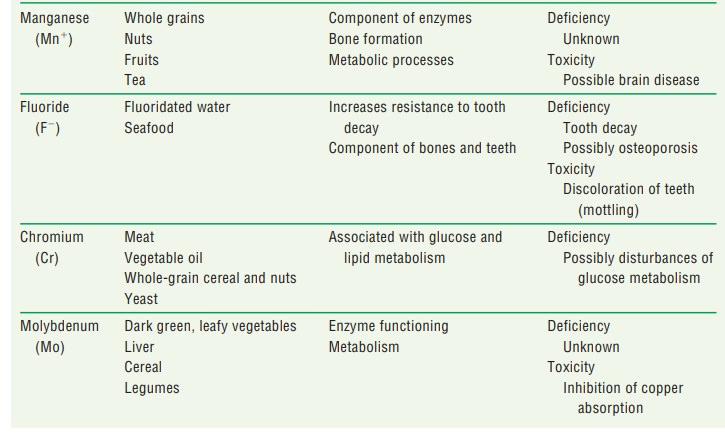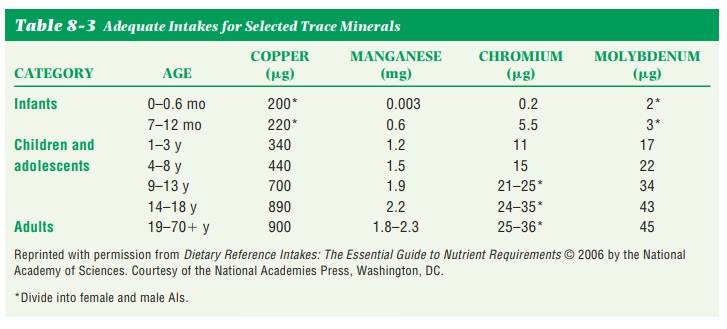Chapter: Nutrition and Diet Therapy: Minerals
Classification of Minerals
CLASSIFICATION
Minerals are divided
into two groups. They are the major minerals, so named because each is required
in amounts greater than 100 mg a day, and the trace minerals, which are needed
in amounts smaller than 100 mg a day (Tables 8-1 and 8-2).

As mineral salts
dissolve in water, they break into separate, electrically charged particles
called ions. Ions, if positively
charged, are called cations. When negatively charged, they are anions. The cations
and anions must be balanced within the body fluids to maintain
electroneutrality. For example, if body fluid contains 200 positive (+ )
charges, it must also contain 200 negative (-) charges. These ions are known as
electrolytes.
Electrolytes
are essential in maintaining the body’s fluid balance, and they contribute to
its electrical balance, assist in its transmission of nerve impulses and
contraction of muscles, and help regulate its acid-base balance.
Normally,
a balanced diet will maintain electrolyte balance. However, in cases of severe
diarrhea, vomiting, high fever, or burns, electrolytes are lost, and the
electrolyte balance can be upset. Medical intervention will be necessary to
replace the lost electrolytes.
Scientists lack exact
information on some of the trace elements, although they do know that trace
elements are essential to good health. The study of these elements continues to
reveal their specific relationships to human nutri-tion. A balanced diet is the
only safe way of including minerals in the amounts necessary to maintain
health.


The
Food and Nutrition Board of the National Academy of Sciences– National Research
Council (hereafter NRC) has recommended dietary allowances for minerals where
research indicates knowledge is adequate to do so.
For
those minerals where there remains some uncertainty as to amounts of specific
human requirements, the NRC has provided a table of Adequate Intakes of
selected minerals (Table 8-3). The NRC recommends that the upper levels of
listed amounts not be habitually exceeded. (Tables 8-1 and 8-2 list the best
sources, functions, and deficiency symptoms of minerals.)
In addition, the
Institute of Medicine has developed Daily Reference Intakes (DRIs) for calcium,
fluoride, phosphorus, and magnesium. The DRI incorporates Estimated Average
Requirements (EAR), the RDA, and Tolerable Upper Intake Levels.

Related Topics